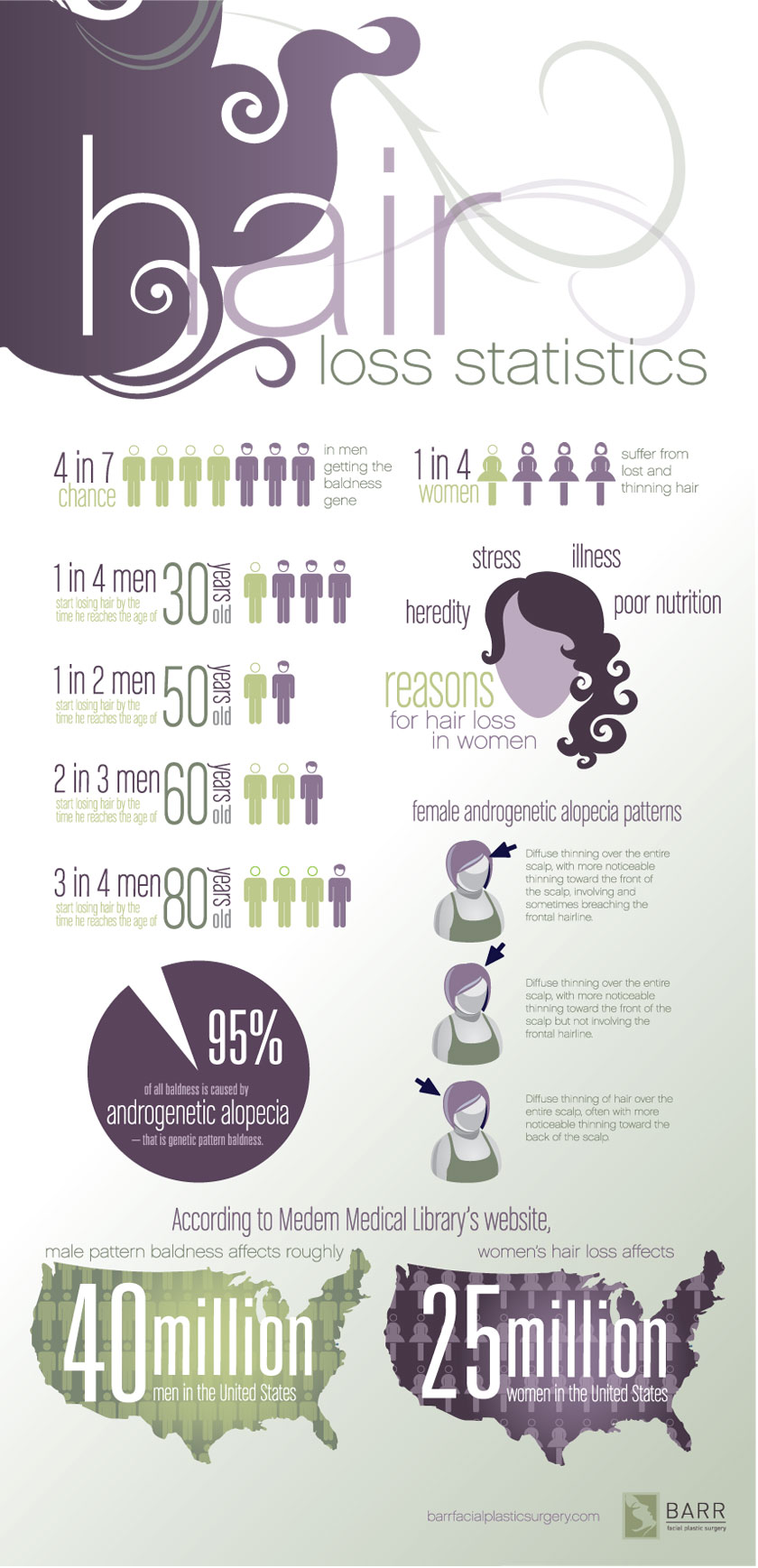Hair History
Hair Loss Statistics
Surgical hair restoration has existed since the 1920s. However, it wasn’t until the 1960s that surgeons learned that we could take hair from the back of the scalp where it is genetically stable (won’t fall out) and transplant it to regions without hair and it would grow. While this ‘donor dominance’ concept is more complicated than originally thought, it is the basis of modern day hair plugs and restoration. The cosmetic revolution that has occurred since that discovery has mainly to do with our understanding of how hair grows in clusters, or follicular units. It is by preserving this unit and paying close attention to designing hairlines that mimic what is seen in nature that make the results from hair restoration today so natural in appearance.
It’s well known that hair loss is a problem for men, but many don’t recognize it is rather common in women as well. 1 in 4 women suffer from loss or thinning of hair, compared to 3 out of 4 men; that makes 5/8ths of the population. Of those 65 million people in the United States, 95% are afflicted simply by genetics, what we know as androgenetic alopecia.



